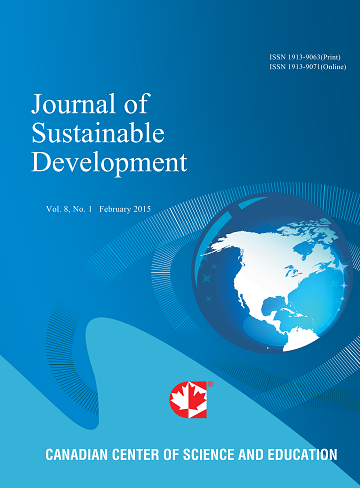Developing a Success Rate Metric for Evaluating Compensation in Development-Driven Forced Displacement and Resettlement in Bangladesh: A Micro-Level Approach
- Syed Al Atahar
- Kenichi Ishibashi
Abstract
Despite the large number of people being displaced every year owing to development projects, particularly in developing countries, resettling and rehabilitating displaced individuals remains a major challenge. To address this challenge, compensation is used as the primary tool for development-driven forced displacement and resettlement, provided in the form of land, cash, and houses for displaced households. The effectiveness of compensation in resettling displaced individuals is crucial. Therefore, it is essential to assess the impact of compensation on the characteristics of affected households at the micro-level. While existing research has predominantly offered a macro-level perspective on compensation outcomes, the study presents a new approach for evaluating the success rate of compensation programs at a micro-level, focusing on the characteristics of the households affected by the Jamuna Multi-purpose Bridge Project in Bangladesh. The approach uses the chi-square test to assess changes in household living conditions before and after compensation. It determines if compensation has an equal or unequal effect on different household characteristics across eight categories derived from the Impoverishment Risk and Reconstruction (IRR) model. The study calculates the success rate of compensation by counting the number of equal effects for all household characteristics within each category. The findings led to the development of a success rate metric for evaluating compensation programs, where a success rate of 50% indicates moderate success and 75% indicates a successful outcome. This provides a clear and quantifiable measure for assessing the effectiveness of compensation and guiding the development of fairer compensation policies and outcomes.
- Full Text:
 PDF
PDF
- DOI:10.5539/jsd.v18n6p29
Journal Metrics
Index
- Academic Journals Database
- ACNP
- AGRICOLA
- ANVUR (Italian National Agency for the Evaluation of Universities and Research Institutes)
- Berkeley Library
- CAB Abstracts
- CNKI Scholar
- COPAC
- CrossRef
- DTU Library
- EBSCOhost
- Elektronische Zeitschriftenbibliothek (EZB)
- EuroPub Database
- Excellence in Research for Australia (ERA)
- Genamics JournalSeek
- GETIT@YALE (Yale University Library)
- Ghent University Library
- Google Scholar
- Harvard Library
- INDEX ISLAMICUS
- Infotrieve
- Jisc Library Hub Discover
- JournalGuide
- JournalTOCs
- LOCKSS
- Max Planck Institutes
- MIAR
- Mir@bel
- NewJour
- Norwegian Centre for Research Data (NSD)
- Open J-Gate
- PKP Open Archives Harvester
- Pollution Abstracts
- Publons
- Pubmed journal list
- RePEc
- ROAD
- SafetyLit
- Scilit
- SHERPA/RoMEO
- Standard Periodical Directory
- Stanford Libraries
- UCR Library
- Ulrich's
- UniCat
- Universe Digital Library
- UoS Library
- WJCI Report
- WorldCat
- WorldWideScience
- Zeitschriften Daten Bank (ZDB)
Contact
- Sherry SunEditorial Assistant
- jsd@ccsenet.org
